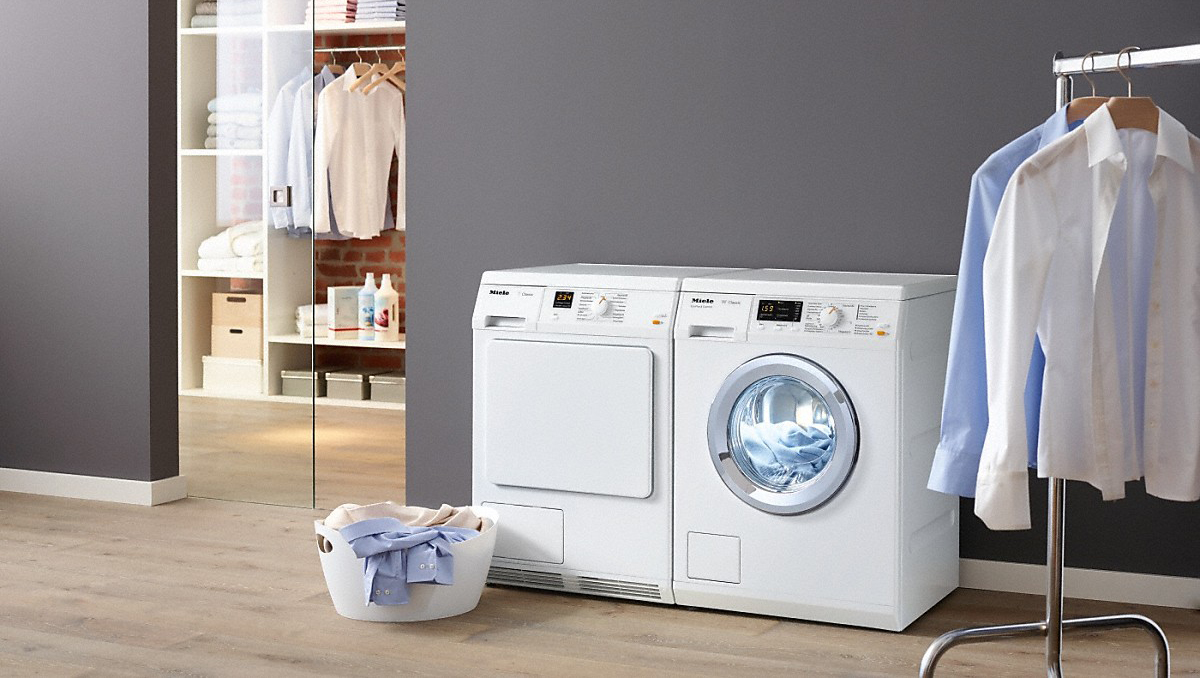
It's the stuff of winter nightmares: washing that won't dry for days. And if it's anything large/thick (towels and king-size bedding, we're looking at you), then hello, mouldy smell. Apart from drying your laundry on radiators while the heating is on (not practical for anything larger than the odd t-shirt), which will dry your clothes quickest – and be the most efficient – a tumble dryer or one of the best dehumidifiers you can find?
Dehumidifiers: pros and cons
A dehumidifier quite simply sucks in humid air, condenses it, and then puts dry air back out. Dehumidifiers generally use less than 300 watts an hour; come in a wide range of sizes and price points, from small units suitable for a small room (a tiny utility room, for instance) to whole-house appliances. The most important distinction to bear in mind is between compressor humidifiers and desiccant humidifiers.
Compressor dehumidifiers contain refrigerator-style cooling coils – essentially, they cool the air as they dry it. Desiccant models, on the other hand, use a chemical to break down the moisture in the air they suck in. Of the two types, desiccant humidifiers are more suited to the UK climate, slightly warming not cooling the air around them, and they are quieter, making it possible to run them at night.
The pros of a humidifier? It will dry your clothes gently, without causing any damage to the fabric, and will help with creases, too. The cons? You will have to leave your dehumidifier on for longer than you would a tumble dryer, although the wattage of your device will play a part in calculating the cost – new models will run at as little as 165 watts.
Tumble dryers: pros and cons
Concerned about the amount of energy a tumble dryer consumes? Tumble dryers use anywhere from 1800 watts to 5000 watts in an hour. Consider a heat-pump dryer – more energy efficient, and less costly to run.
Newer models come with much safer, more sophisticated drums that will be perfectly safe for quickly drying your towels and bedsheets. The risk of damaging delicate fabrics does remain, however, and we still advise against drying any delicates this way. If your clothes are a mixture, and you have the space for a dehumidifier, the best way to go is to have both, but only using the tumble dryer to dry sturdier items (which you don't mind replacing every few years if necessary).
And the verdict is...
While hanging wet clothes on a clothes horse in a well-ventilated area is clearly the most energy-efficient, cost-effective way to dry clothes, using a dehumidifier is more energy-efficient than a tumble dryer (as long as it's switched off when clothes are dry).
Get small space home decor ideas, celeb inspiration, DIY tips and more, straight to your inbox!
However, if you're committed to buying a tumble dryer, the Energy Saving Trust advises in investing in a high-rated model, ensuring it has an automatic drying sensor function so it doesn't over-dry clothes, but switches off when it senses the moisture level is low. It also suggests investing in a gas tumble dryer that has a lower impact on the environment than an electric tumble dryer, or a heat pump tumble dryer which can use around 25 per cent less energy than a standard dryer. Using a high spin setting on your washing machine will mean your washing will need to spend less time in the tumble dryer, too.
Anna is a professional writer with many years of experience. She has a passion for contemporary home decor and gardening. She covers a range of topics, from practical advice to interior and garden design.